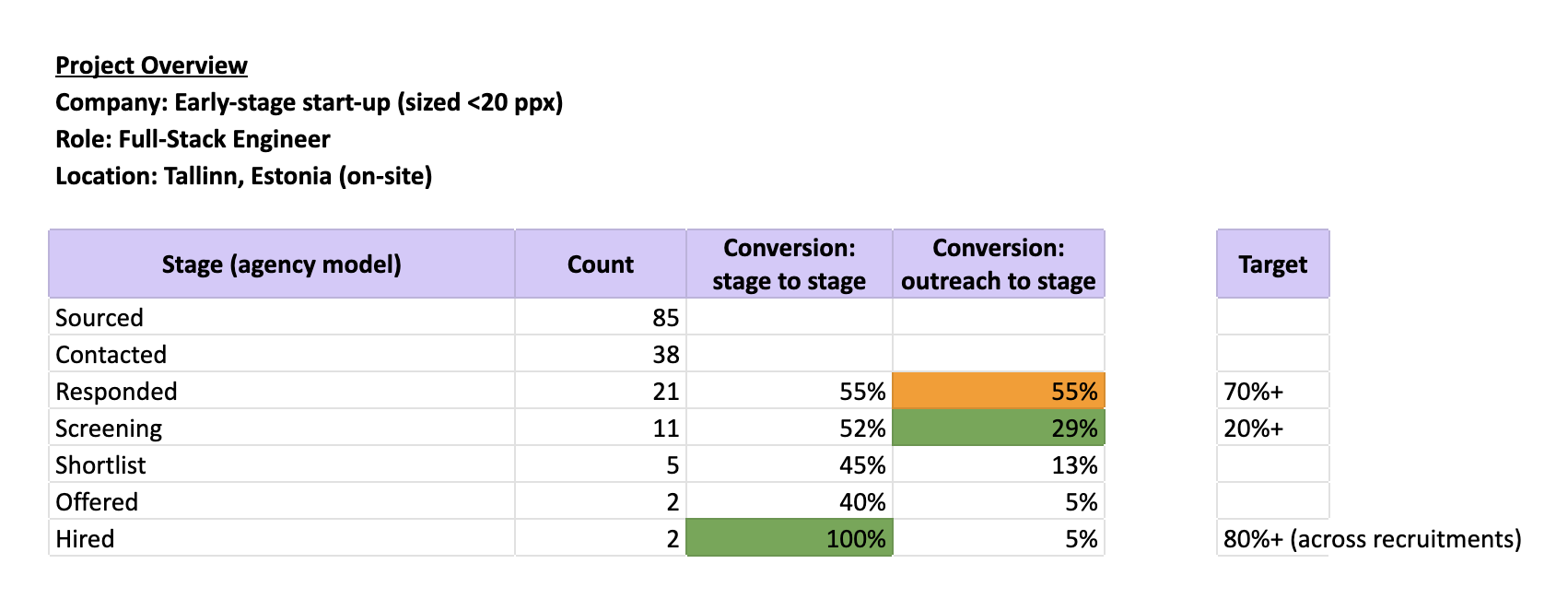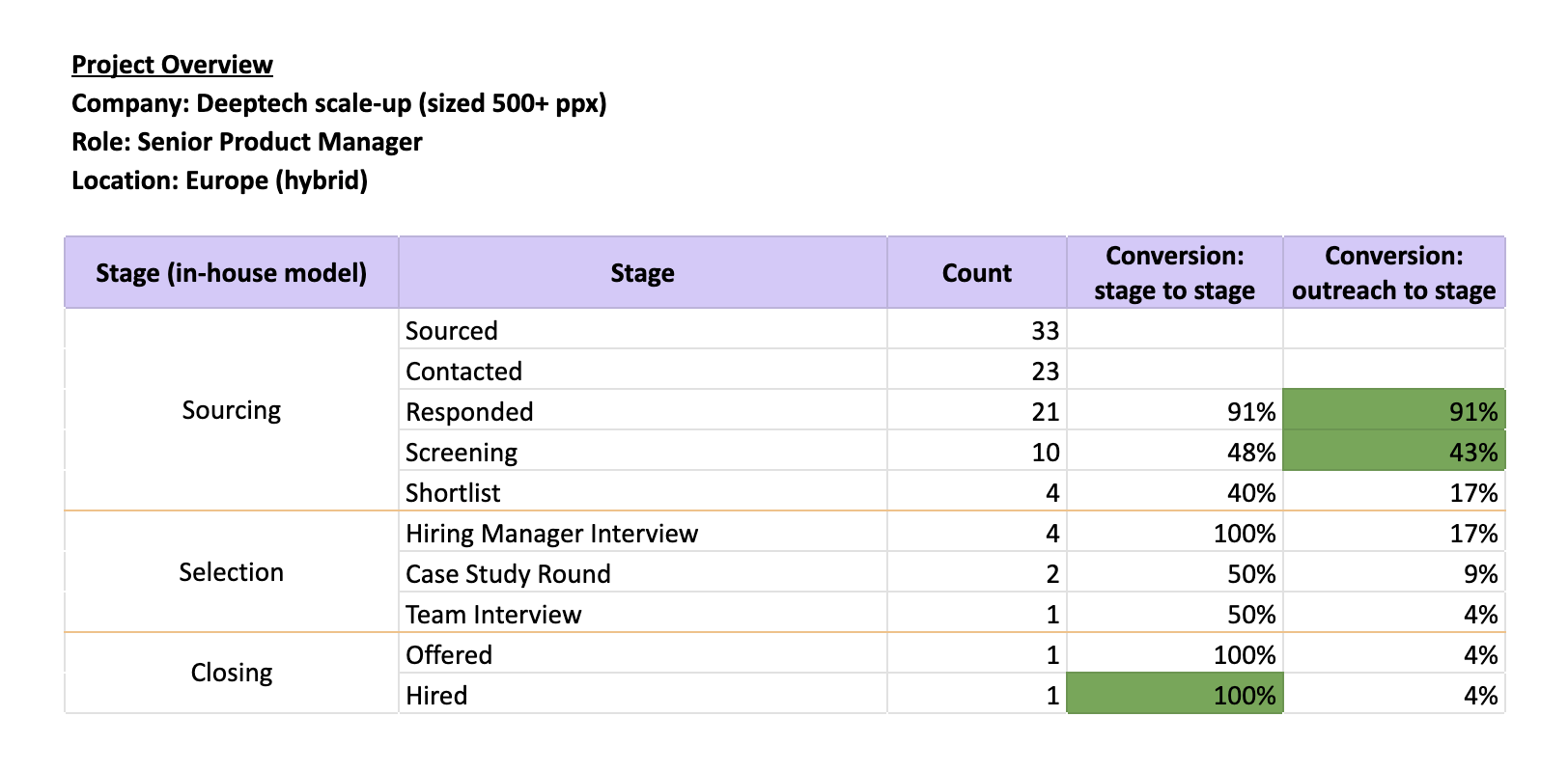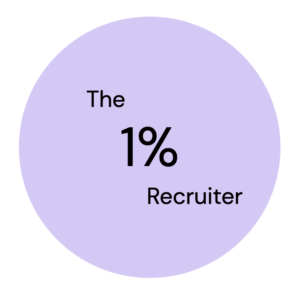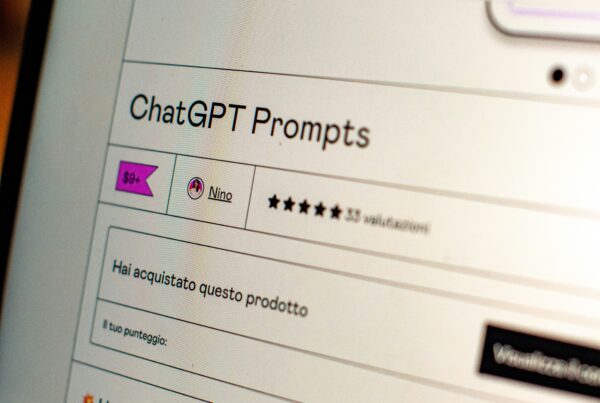
Data-driven approach in recruitment can be overwhelming at first sight. However, you probably already track your sales to understand how many leads convert to paying customers. In candidate-driven markets, treat your hiring funnel like your sales funnel.
I deep-dived into tracking conversion rates in recruitment and the story it tells you by showcasing two real-life examples: the recruitment of Software Engineers for an early-stage start-up and a Senior Product Manager search for a niche deeptech scale-up.
Key Recruitment Metrics You Should Track

Recruitment Funnel Example: Software Engineer Search
Project 1: Software Engineers for an Early-Stage Startup
I built a longlist of 85 candidates (“raw list”) and selected the top 38 candidates for outreach. From outreach:
- 21 candidates responded, resulting in a 55% response rate
- 11 candidates agreed to the screening
Tracking Efficiency as a Recruiter:
- The response rate: My target is usually above 70%, whilst the industry average is as low as 20-30%. In this case, my response rate was below my target (55%), but I got 11 people to the screening round, so it was enough to proceed.
- Outreach to screen: I aim for at least 20% or more converting from outreach to the screening round (in this case, 29%). It enables you to estimate the target number of contacts you need to make to get enough leads for the screening and selection round.
Eventually, the recruitment resulted in 2 hires with an offer acceptance rate of 100%.
This one is another useful metric I’m tracking, whilst I’m aiming for results of 80% and above across all my recruitments.
Tracking Conversion Rates in In-House Recruitment

Recruitment Funnel Example: Senior Product Manager Search
Project 2: Senior Product Manager for a DeepTech Scale-Up
This time, the market was extremely niche.
- Only 33 candidates met the profile requirements to be pipelined.
- Hyper-personalised outreach resulted in a 91% response rate — crucial when the talent pool is limited.
In the in-house model, I want to understand the efficiency of the whole selection process, adding 3 steps following the shortlist submission: hiring manager interview, product case study round and team interview.
Insights from the Full Recruitment Funnel:
- 100% of the shortlisted candidates converted into a hiring manager interview, and 50% passed it further to the product case study. Companies even set a minimum stage-to-stage conversion of 20%+ to ensure that the pre-screening round has defined qualified candidates.
- Further insights about the recruitment process efficiency can be derived when the conversion from shortlist to technical round is as low as 0%, or there’s a major drop out from the technical round, and candidates are not converted into hires.
Modern applicant tracking systems will present you visually insightful recruitment funnel (Teamtailor in this example).

Pipeline Conversion in Senior Product Manager Recruitment
How to Apply Conversion Rates to Your Hiring Strategy
You don’t have to be an Excel wizard to bring a data-driven approach to your recruitment process. My recommendation: start small and simple. Track things that make sense and help you make your recruitment approach leaner and effective.
Key Takeaways
- Response rate 🎯
Focusing on a high response rate will increase quality over quantity. By pipelining strong profiles and making personalised outreaches, you will increase the conversion to the interviewing phase and raise the chances of a quality hire.
- Reverse engineering 🧠
Understanding the number magic behind each recruitment, you can make more intelligent estimations of time and resources needed for a successful hire. 10 outreaches with a response rate of 20% for a successful hire? Unlikely.
- Market intelligence 💡
Tracking conversions across all recruitments will bring you useful market data to understand the risks behind each recruitment, based on the position, seniority, location and other factors. Over time, you start emphasising the right steps in hiring.
There are tons of other metrics to track, like time to hire and cost per hire, but this is already a topic for another edition – stay tuned 🙌
Subscribe to my LinkedIn Newsletter "The 1% Recruiter"




